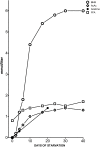Ketosis, ketogenic diet and food intake control: a complex relationship
- PMID: 25698989
- PMCID: PMC4313585
- DOI: 10.3389/fpsyg.2015.00027
Ketosis, ketogenic diet and food intake control: a complex relationship
Abstract
Though the hunger-reduction phenomenon reported during ketogenic diets is well-known, the underlying molecular and cellular mechanisms remain uncertain. Ketosis has been demonstrated to exert an anorexigenic effect via cholecystokinin (CCK) release while reducing orexigenic signals e.g., via ghrelin. However, ketone bodies (KB) seem to be able to increase food intake through AMP-activated protein kinase (AMPK) phosphorylation, gamma-aminobutyric acid (GABA) and the release and production of adiponectin. The aim of this review is to provide a summary of our current knowledge of the effects of ketogenic diet (KD) on food control in an effort to unify the apparently contradictory data into a coherent picture.
Keywords: appetite; brain; hunger; hypothalamus; ketogenic diet; ketones.
Figures




References
Publication types
LinkOut - more resources
Full Text Sources
Other Literature Sources
Medical

